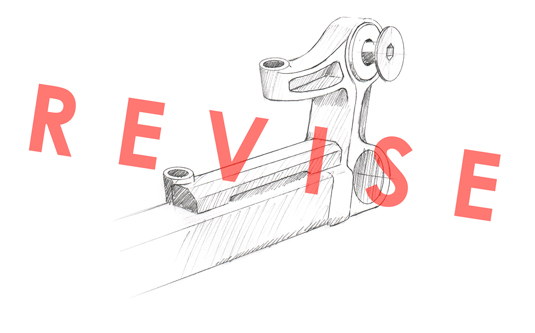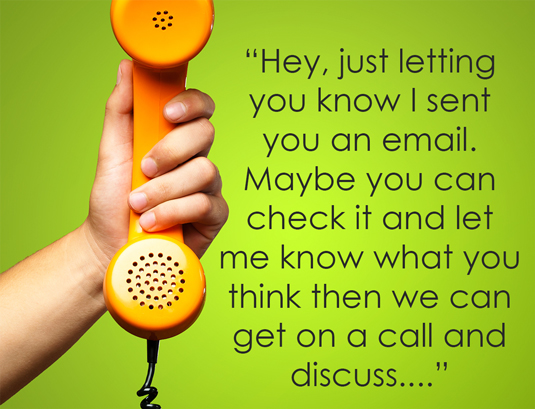You Are Designing Update to Your New Client's Wireless Network
11 ways clients can communicate better with designers
If you're a business owner, it's likely you've hired or will soon be hiring a designer. You may hire...
- a web designer to build your website
- a UX designer to build an app
- an industrial designer if you're developing a product or if you want someone with a versatile approach to problem solving
- a graphic designer for designing ad campaigns, signage or branding
- a design engineer to work with industrial designers in making sure your product can be manufactured and will work
...the list goes on and on. In short, designers are becoming paramount in nearly every field, and although they often prove invaluable, they tend to use a language shared among their creative cohorts.
Understanding the simple tips outlined in this article will help make the next time you collaborate with a designer, a success and a delight.
01. Agree on outcomes
This is perhaps the most important item on this list. Since design and aesthetics can be quite subjective, agreeing on some quantifiable outcome is important to do before beginning. Make the deliverables and successful outcomes black and white, not gray.
For example, a good, clear deliverable is: three logo concepts to choose from with the option to refine one of them three times. An example of a bad deliverable is: a few nice, creative logo concepts, which can be tweaked until satisfied.
The good example explains how many exactly, and it draws a definitive line at which the project will be completed. The bad example is non-specific and doesn't actually define the end or whether the designer successfully delivered what was agreed upon.
02. Pay proper money
This is a bit of a precautionary warning. When working with a designer, the more you try to shortcut and reduce spending, the less satisfied you'll be with the result.
The creative process is one that often can't be rushed. Research and exploration are two words people wince at when they realize they're being billed for, especially since there's often no deliverable as a direct result of research or exploration.
The reason this is important is because designers never learn to be creative. In fact, creativity can't really be taught. A process however, can be taught and the process serves aids the designer in producing concepts that satisfy the needs of the client or employer.
Should you ask the designer to skip out on part of the process, their work will often fall down in the end because the foundation was never built. Just like a house needs a solid foundation and understanding of engineering and materials, a design needs to be well-researched and the designer needs adequate time to explore directions before pursuing the one that makes the most sense for the client.
What do you do if the designer's quote comes in too high? Please fight the urge to ask him or her to cut out part of the process and politely explain that you've got a budget you need to work with. Ask if there's any way to find a solution that is fair for both of you.
03. Agree on the revisions process
Every project will see revisions before it's finished, that much should be understood. Revisions however, is the stuff of 'project creep'. Project creep is what happens when a project's scope grows beyond that which both parties agreed to at the outset of the project.
When you're working with a freelance designer, the designer's time is very valuable. Often, freelancers need to juggle between three and five clients at once to make a living.

In this scenario, every minute of a designer's day counts. He or she will be reluctant to make revisions because often times a client will request small changes ad nauseam, eating away at the designer's overly-busy schedule.
Agreeing upon how many revisions will be made and how they'll be handled before you begin collaborating with a designer will save you money and your designer will be grateful you had the foresight to ask about this.
04. Be open minded
This also sounds obvious, however most people get attached to their ideas, which makes it hard to explore other options. To a non-designer, finding a logo or design can be very exciting and hard to part with when somebody points out the possible downfalls of the design.
Designers spend years of their lives undergoing harsh critique, which explores the shortcomings of their solutions. In college speak, designers have been told 'why their ideas suck' for long enough to spot weaknesses in design very quickly.
Trusting the designer's opinion and being open minded will increase the chances that you'll end up with a strong design that you may have not ended up with otherwise.
05. Be aware of time zones
This may sound obvious, but not everyone takes location into consideration. Thankfully, technology allows us to collaborate from around the globe. Though this means your client or designer is just an email or phone call away, it also means that you may be trying to communicate at an inappropriate time.

Designers who are self-employed also have the luxury of working whenever they want, though most will adhere to local business hours. To be as considerate as possible, you may want to ask your designer when he or she works, replies to emails and accepts phone calls.
Just because you're excited that you sent off an email to your designer, doesn't mean you need to let them know via text and voicemail that you did so. Your designer will respond when he or she is ready. Agreeing upon when you and your designer are to be available and how you expect to be contacted is a great way to begin.
06. Use examples and references
Everyone has opinions and everyone knows what they like and don't like. When describing what you wish the designer to create, offer examples. Some people articulate themselves verbally better than others. Some rely on visuals to help them communicate.
When you're dealing with a designer, or any other creative professional, it's often a great idea to begin sharing examples of what you like and what you don't like, and specifically why that's so.
For example, if you're getting a new website designed, send over a link or screen shot to a website you wish to reference and explain why you do or do not like it. Words leave lots up to the imagination; pictures leave less room for misinterpretation. I recommend using Pinterest for such activity.
07. Ask for rephrase
Right when you think you're being understood is a great time to ask your designer to rephrase the question. You can do it politely and he or she will understand you're just trying to prevent him or her from wasting time on the wrong idea.
Once the designer can rephrase and tell you exactly what you want produced, you're good to go. Remember, time is money both to you and your client. Save time by preventing the designer from chasing the wrong concept.
08. Make us of the cloud
When working with your designer, you'll undoubtedly be asked your opinion on various concepts throughout the design phase. Designers like to work with large files because they allow details to be scrutinized and image quality to be appreciated.

In order to send and receive large files, it's wise to agree to how files will be shared ahead of time. Using a cloud storage account is one way to share large files. With recent advances in email and multimedia messaging, this is becoming less of a concern, however, having a dedicated place to share files is a good way to keep the project files in one place and separate from others.
Free tools that allow this include: Dropbox.com, Google Drive, Amazon Cloud Drive, iCloud are some recommendations.
09. Agree on update frequency
Any designer will agree with me here, update frequency varies by client and quickly become a burden. Some clients like to be more involved and prefer to know the project's progress is each step of the way. Other clients just have time to speak at the beginning and the end of the project.

Depending on the experience and confidence level of the designer, this will vary. Before you begin working with a designer, make sure to outline how often you expect to be updated. This is a big deal because updates take time out of our day. Once you've reached an agreement, stick with it and fight the urge to 'just check in' on a daily basis.
10. Outline objectives; allow the designer to design
If the designer is aware of the goals of the project, he or she should be able to help you accomplish your goals through the craft of design.
Let's say your goal is to increase conversions on your website, or evoke seduction with your new logo, or appeal to a young crowd with your new fashion line. Rather than assume you know how to design the best solution, let the designer do his or her job.
By focusing on the goal of the design and not telling the designer how the design should look, you'll free her to do what she does best and you'll likely be pleasantly surprised.
11. Leave a paper trail
Using email is ideal for a few reasons. First, nobody needs to take notes while the other orders are made over the phone. Second, an email full of requests and concerns can quickly be turned into a clear to-do list. Third, having a paper trail of both sides of the conversation throughout the project provides an unbiased witness should issues arise along the way.
If needed you or the designer can politely remind the other of what was agreed upon in writing and focus on getting results and to the end-goal where both parties are hopefully happy with the outcome.
Conclusions
With those 11 tips on how to work with and communicate with your designer, I hope your confidence is restored. You should be able to use the fact that this was written by a freelance designer to understand the process from both sides.
Working with a designer should be exciting and rewarding and the better you understand how to communicate with a creative professional, the easier the process should be. Designers live to make the lives of others better by using creative skills.
With that in mind, communicate effectively, agree to everything possible up-front and let the designers do what they do best. Oh, and never underestimate the power of "Please," and "Thank you."
Words: Will Gibbons
Will Gibbons is a freelance industrial designer and writer, fitness junkie and outdoor enthusiast. Check out his blog where he writes about the intersection of design and business and personal growth at IndustrialDesignJournal.com. He can be found here as well: Twitter, LinkedIn and Instagram.
Related articles
You Are Designing Update to Your New Client's Wireless Network
Source: https://www.creativebloq.com/business/communicate-better-designers-101413329
0 Response to "You Are Designing Update to Your New Client's Wireless Network"
Post a Comment